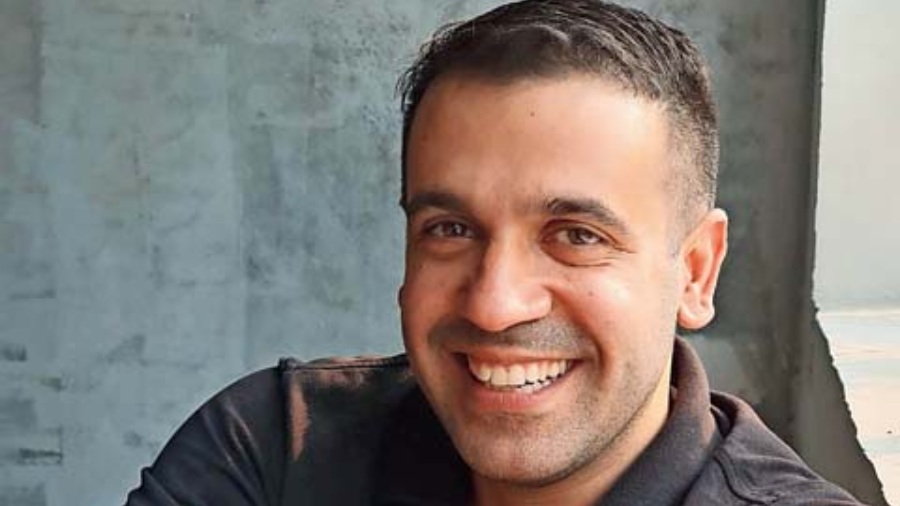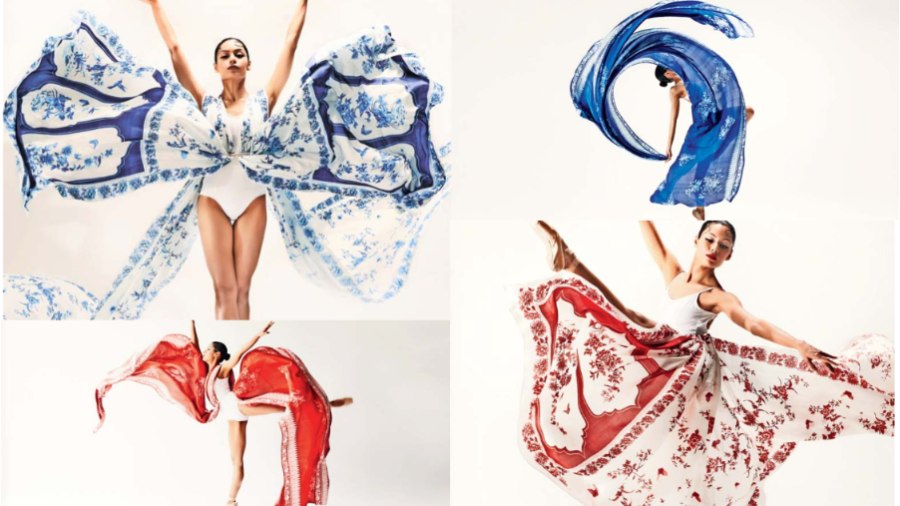Delhi-based designer Ashdeen Z. Lilaowala’s Rhythm & Blues is a limited edition of printed saris, which has a lot of poetry in it and is a balance of the young and the classic. We chatted with the designer on the saris and more.
The collection looks lovely...
We had been doing prints for the last few years too and this year we thought of going back to one of our inspirations, which has always been blue-and-white pottery, oriental pottery which has been so classic and every designer has done it in some form or another. We wanted to take the painterly aspect of it. So, all the prints have been hand-drawn in watercolour, poster colours and painted on paper and then carefully internalised and we have accurately printed it on the saris. We wanted the depths of the prints and the detail of it all to come through. Layers and layers of brushstrokes have gone into creating one-of-a-kind motifs.
Tell us how you shot it...
While we were working, we thought since these prints are fluid, had motion in them and some delicateness, I kind of had an idea that we wanted to shoot with a dancer and what else than ballet which is so elegant and graceful. We were lucky to meet this model who is a ballerina and has been performing for many years... Ritika Chandra... we approached her and she was ready to model for us. We just took her movement and her body as a muse or a canvas and made sure that the saris were moving at the same time so that it looks like the saris are also dancing to the music rather than they being still. We wanted to show a sari that can be draped in various ways and there is no one specific way and it still looks all elegant and charming. That was the larger aspect of the saris.


While we were working, we thought since these prints are fluid, had motion in them and some delicateness, I kind of had an idea that we wanted to shoot with a dancer and what else than ballet, which is so elegant and graceful. We were lucky to meet this model who is a ballerina and has been performing for many years... Ritika Chandra... we approached her and she was ready to model for us
Ashdeen Z. Lilaowala
What are the motifs like?
If the border is more solid and heavy, the jaal was open and lighter to kind of make sure that not all saris looked the same and they all have a different density. We looked at figurines and vases which were exchanged during trade between India and China. I do love blue pottery and I wish I had lots of it. I have blue-and-white plate sets. We have used elements of different designs, our Cheena Cheeni designs, which is oriental Chinese men and women, detailed pagodas and bridges. We have another design called the Baug or the garden, full of cherry blossoms and chrysanthemums. In Eden, we have used the deer motif. I wasn’t 100 per cent sure when we had started it but my girls were quite convinced. There are rabbits too and the deer has the symbolic meaning... an image of hope and beauty. In embroidery, it is difficult to do, but in print it looks elegant and beautiful. We have done big anars. One of my favourite motif is the pomegranate. It symbolises fertility and has transcended from various civilisations... Greek, Chinese. We have used it as a block motif. It gives a different pattern altogether in the saris. We have done three colours... blue, red and pink. We can do it on any fabric.
The saris look lightweight...
Yeah, these are lightweight. The ones in the picture are on fine raw silk.
How do you strike a balance between the youthful and the classic?
It’s about how you feel wearing it. A lot of people have preconceived notions about the colour or fabric. We always tell them to be open to seeing it.
Pictures courtesy the brand
